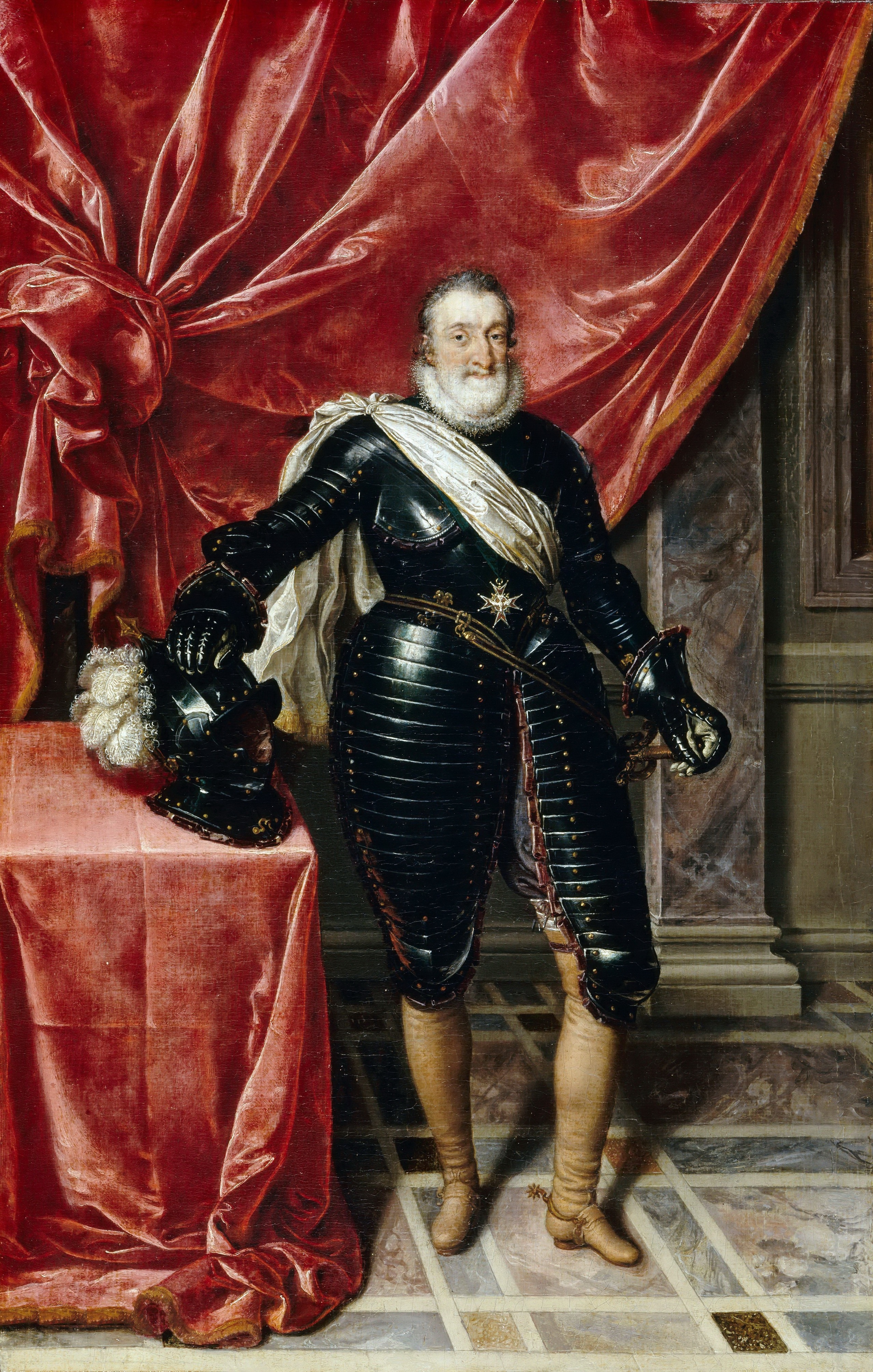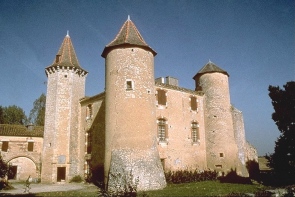|
1590 In France
Events from the year 1590 in France Incumbents * Monarch – Henry IV Events *14 March – Battle of Ivry *May to September – Siege of Paris Births Full date missing * François Perrier, painter (died 1650) Deaths Full date missing *Guillaume de Salluste Du Bartas, poet (born 1544) *André Thévet, priest, explorer and cosmographer (born 1516) * Charles de Bourbon, cardinal (born 1523) * Germain Pilon, sculptor (born c.1525) *Jean Baptiste Androuet du Cerceau Jean Baptiste Androuet du Cerceau (1544/47–1590) was a French architect who designed the Pont Neuf (1579), spanning the Seine, Paris, and became supervisor of the royal works under Henri III and Henri IV, including the Louvre. Several ''hôtel ..., architect (born 1544/47) * Ambroise Paré, barber surgeon (born c.1510) See also References 1590s in France {{France-hist-stub ... [...More Info...] [...Related Items...] OR: [Wikipedia] [Google] [Baidu] |
France
France (), officially the French Republic ( ), is a country primarily located in Western Europe. It also comprises of Overseas France, overseas regions and territories in the Americas and the Atlantic Ocean, Atlantic, Pacific Ocean, Pacific and Indian Oceans. Its Metropolitan France, metropolitan area extends from the Rhine to the Atlantic Ocean and from the Mediterranean Sea to the English Channel and the North Sea; overseas territories include French Guiana in South America, Saint Pierre and Miquelon in the North Atlantic, the French West Indies, and many islands in Oceania and the Indian Ocean. Due to its several coastal territories, France has the largest exclusive economic zone in the world. France borders Belgium, Luxembourg, Germany, Switzerland, Monaco, Italy, Andorra, and Spain in continental Europe, as well as the Kingdom of the Netherlands, Netherlands, Suriname, and Brazil in the Americas via its overseas territories in French Guiana and Saint Martin (island), ... [...More Info...] [...Related Items...] OR: [Wikipedia] [Google] [Baidu] |
List Of French Monarchs
France was ruled by monarchs from the establishment of the Kingdom of West Francia in 843 until the end of the Second French Empire in 1870, with several interruptions. Classical French historiography usually regards Clovis I () as the first king of France, however historians today consider that such a kingdom did not begin until the establishment of West Francia. Titles The kings used the title "King of the Franks" ( la, Rex Francorum) until the late twelfth century; the first to adopt the title of "King of France" (Latin Latin (, or , ) is a classical language belonging to the Italic branch of the Indo-European languages. Latin was originally a dialect spoken in the lower Tiber area (then known as Latium) around present-day Rome, but through the power of the ...: ''Rex Franciae''; French language, French: ''roi de France'') was Philip II of France, Philip II in 1190 (r. 1180–1223), after which the title "King of the Franks" gradually lost ground. However, ... [...More Info...] [...Related Items...] OR: [Wikipedia] [Google] [Baidu] |
Henry IV Of France
Henry IV (french: Henri IV; 13 December 1553 – 14 May 1610), also known by the epithets Good King Henry or Henry the Great, was King of Navarre (as Henry III) from 1572 and King of France from 1589 to 1610. He was the first monarch of France from the House of Bourbon, a cadet branch of the Capetian dynasty. He was assassinated in 1610 by François Ravaillac, a Catholic zealot, and was succeeded by his son Louis XIII. Henry was the son of Jeanne III of Navarre and Antoine de Bourbon, Duke of Vendôme. He was baptised as a Catholic but raised in the Protestant faith by his mother. He inherited the throne of Navarre in 1572 on his mother's death. As a Huguenot, Henry was involved in the French Wars of Religion, barely escaping assassination in the St. Bartholomew's Day massacre. He later led Protestant forces against the French royal army. Henry became king of France in 1589 upon the death of Henry III, his brother-in-law and distant cousin. He was the first Fre ... [...More Info...] [...Related Items...] OR: [Wikipedia] [Google] [Baidu] |
Battle Of Ivry
The Battle of Ivry was fought on 14 March 1590, during the French Wars of Religion. The battle was a decisive victory for Henry IV of France, leading French royal and English forces against the Catholic League by the Duc de Mayenne and Spanish forces under the Count of Egmont. Henry's forces were victorious and he went on to lay siege to Paris. The battle occurred on the plain of Épieds, Eure near Ivry (later renamed Ivry-la-Bataille), Normandy. Ivry-la-Bataille is located on the river Eure and about thirty miles west of Paris, at the boundary between the Île-de-France and the Beauce regions. Prelude Henry IV had moved rapidly to besiege Dreux, a town controlled by the League. As Mayenne followed intending to raise the siege, Henry withdrew but stayed within sight. He deployed his army on the plain of Saint André between the towns of Nonancourt and Ivry. Henry had been reinforced by English troops sent in support by Queen Elizabeth I.Morris p 342 * Henry had 12,000 foot ... [...More Info...] [...Related Items...] OR: [Wikipedia] [Google] [Baidu] |
Siege Of Paris (1590)
The siege of Paris took place in 1590 during the French Wars of Religion when the French Royal Army under Henry of Navarre, and supported by the Huguenots, failed to capture the city of Paris from the Catholic League. Paris was finally relieved from the siege by an international Catholic and Spanish army under the command of Alexander Farnese, Duke of Parma. Background After his victory over the Catholic forces commanded by Charles, Duke of Mayenne and Charles of Guise, Duke of Aumale at the Battle of Ivry on 14 March, Henry of Navarre advanced with his troops on his main objective of Paris, possession of which would allow him to confirm his contested claim to the French throne. Paris at the time was a large walled city of around 200,000–220,000 people. Siege of Paris On 7 May, Henry's army surrounded the city, imposing a blockade and burnt windmills to prevent food from reaching Paris. Henry had at this point only around 12,000–13,000 troops, facing defenders estimated ... [...More Info...] [...Related Items...] OR: [Wikipedia] [Google] [Baidu] |
François Perrier (painter)
François Perrier (1590–1650) was a French painter, draftsman, and printmaker. Perrier was instrumental in introducing into France the grand style of the decorative painters of the Roman Baroque. He is also remembered for his two collections of prints after antique sculptures, the ''Segmenta nobilium signorum et statuarum quae temporis dentem invidium evasere'' (Paris, 1638), and ''Icones et segmenta...quae Romae adhuc extant'' (Paris, 1645). These prints provided visual repertories of classical models for generations of European artists and connoisseurs. Biography Perrier was born in Pontarlier. During the years 1620–1625, he resided in Rome, where he took as his model the practitioner of academic Baroque classicism, Giovanni Lanfranco while he was employed on the fresco decoration of the dome of S. Andrea della Valle, one of the earliest examples of Roman Baroque ceiling decoration.Celia Alegret''Perrier, François'' Grove Art Online On his return to France, followi ... [...More Info...] [...Related Items...] OR: [Wikipedia] [Google] [Baidu] |
Guillaume De Salluste Du Bartas
Guillaume de Salluste Du Bartas (1544, in Monfort – July 1590, in Mauvezin) was a Gascon Huguenot courtier and poet. Trained as a doctor of law, he served in the court of Henri de Navarre for most of his career. Du Bartas was celebrated across sixteenth- and seventeenth-century Europe for his divine poetry, particularly ''L'Uranie ''(1574), ''Judit ''(1574), ''La Sepmaine; ou, Creation du monde'' (1578), and ''La Seconde Semaine'' (1584-1603). Life Relatively little is known about Du Bartas’ life. Guillaume Sallustre was born in 1544 to a family of wealthy merchants in Montfort (in the Armagnac region). His family name later became ‘Salluste’ rather than 'Sallustre', perhaps to invite comparison with the Roman historian Sallust. He was possibly a student at College de Guyenne in Bordeaux ( Michel de Montaigne’s school), and studied law in Toulouse under Jacques Cujas; he became a doctor of law in 1567 and a judge in Montfort in 1571. He gained the lordship of nearb ... [...More Info...] [...Related Items...] OR: [Wikipedia] [Google] [Baidu] |
1544 In France
Events from the year 1544 in France. Incumbents * Monarch – Francis I Events *11 April – Battle of Ceresole *2 to 4 June – Battle of Serravalle *July - August; siege of St. Dizier, during the Italian War of 1542–46 Births Full date missing *Guillaume de Salluste Du Bartas, poet (died 1590). Deaths Full date missing *Clément Marot, poet (born 1496) * Charles du Dros, governor *Bonaventure des Périers, writer (born c.1510) *Pierre Chambiges, mason and architect *René of Châlon René (''born again'' or ''reborn'' in French) is a common first name in French-speaking, Spanish-speaking, and German-speaking countries. It derives from the Latin name Renatus. René is the masculine form of the name (Renée being the feminine ..., Prince of Orange and stadtholder in the Low Countries See also References 1540s in France {{France-hist-stub ... [...More Info...] [...Related Items...] OR: [Wikipedia] [Google] [Baidu] |
Salmonsens Konversationsleksikon
''Salmonsens Konversationsleksikon'' is a Danish encyclopedia that has been published in several editions. The first edition, ''Salmonsens Store Illustrerede Konversationsleksikon'' was published in nineteen volumes 1893–1911 by Brødrene Salmonsens Forlag, and named after the publisher Isaac Salmonsen. The second edition, ''Salmonsens Konversationsleksikon'', was published in 26 volumes 1915–1930, under the editorship of Christian Blangstrup (volume 1–21), and Johannes Brøndum-Nielsen and Palle Raunkjær (volume 22–26), issued by J. H. Schultz Forlagsboghandel. Editions * ''Salmonsens Store Illustrerede Konversationsleksikon'', 19 volumes, Copenhagen: Brødrene Salmonsen, 1893–1911 * ''Salmonsens Konversationsleksikon'', 2nd edition, editors: Christian Blangstrup (I–XXI), Johannes Brøndum-Nielsen and Palle Raunkjær (XXII–XXVI), 26 volumes, Copenhagen: J. H. Schultz Forlagsboghandel, 1915–1930. * ''Den Lille Salmonsen'', 3rd edition, 12 volumes, Copenhage ... [...More Info...] [...Related Items...] OR: [Wikipedia] [Google] [Baidu] |
André Thévet
André — sometimes transliterated as Andre — is the French and Portuguese form of the name Andrew, and is now also used in the English-speaking world. It used in France, Quebec, Canada and other French-speaking countries. It is a variation of the Greek name ''Andreas'', a short form of any of various compound names derived from ''andr-'' 'man, warrior'. The name is popular in Norway and Sweden. Cognate names Cognate names are: * Bulgarian language, Bulgarian: Andrei, Andrey * Breton language, Breton : Andrev * Canada, Canadian: André * Catalan language, Catalan: Andreu * Czech language, Czech: Andrej, Ondřej * Dutch language, ...[...More Info...] [...Related Items...] OR: [Wikipedia] [Google] [Baidu] |
Charles De Bourbon (cardinal)
Charles de Bourbon (22 September 1523 – 9 May 1590) was a French cardinal. The Catholic League considered him the rightful King of France as Charles X after the death of Henry III in 1589. His claim was recognized as part of the secret Treaty of Joinville concluded between Philip II of Spain and the League. Biography He was born at La Ferté-sous-Jouarre, in what is now the department of Seine-et-Marne, the eighth child of Charles IV de Bourbon, duke of Vendôme. His mother was Françoise d'Alençon. Charles made a rapid career in the Roman Catholic hierarchy. He was bishop of Nevers (1540–1545), bishop of Saintes (1545–1550, elevated to cardinal in 1548), archbishop of Rouen (1550–1590), bishop of Nantes (1550–1554), Papal legate in Avignon (1565–1590) and bishop of Beauvais (1569–1575). Following the massacre at Wassy and with tensions rising between Guise and Conde forces in Paris, Catherine de' Medici appointed him governor of Paris. Charles attempted to ge ... [...More Info...] [...Related Items...] OR: [Wikipedia] [Google] [Baidu] |





